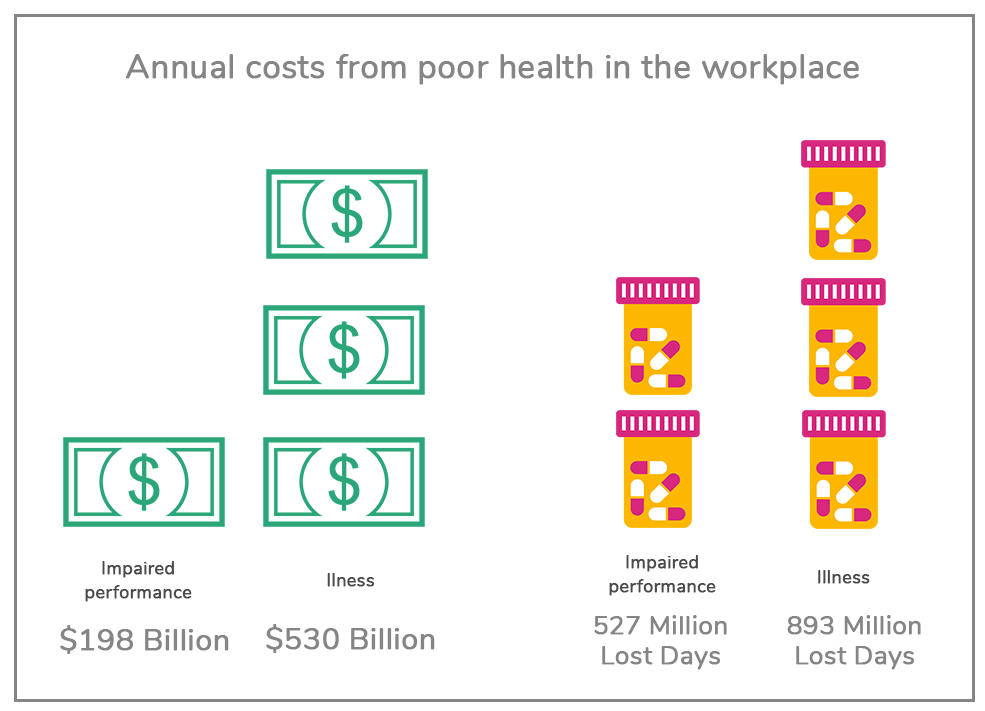IBI Report Details the Cost of Poor Health in the Workplace
Additional findings from the report further demonstrate the need for change to curb rising costs and improve employee health.
- Employees covered for sick time, workers’ compensation, disability, and family and medical leave benefits are absent about 893 million days due to illness and incur an estimated 527 million lost work days due to impaired performance. This totals almost 1.4 billion days annually of absent employees – greater than every nurse in the US missing a year of work.
- The cost of poor health to employers is greater than the combined revenues of Apple, Amazon, Microsoft, Netflix, eBay, and Adobe.
- Impaired performance attributed to chronic health conditions costs U.S. employers $198 billion.

The combination of rising healthcare benefit costs and poor employee health has employers taking matters into their own hands. As Thomas Parry, PhD, IBI President, said: “We can no longer afford to ignore the health of our workforce.” There is a growing trend among employers to directly connect their employees to convenient, quality healthcare services. The 2018 Worksite Medical Clinics survey from human resources consultant Mercer reports the number of employers with 5,000 or more employees offering onsite and nearsite health centers has increased from 24 percent in 2012 to 33 percent this year. Data shows that people stay healthier when they have direct access to care, and employers are in a position to make a significant impact. Offering services, like primary care and occupational health, through onsite and nearsite health centers is the most direct way for organizations to influence healthcare delivery and help employees live healthier lives.